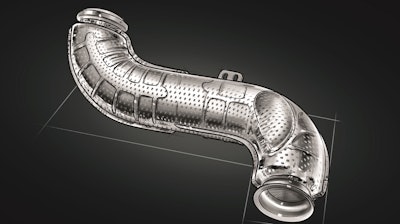
"We don’t know what tomorrow’s construction and mining equipment will look like. But we do know what will contribute to its fire protection." This is the motto under which Thermamax will present leading-edge insulation technologies at bauma 2019 in Munich. They provide effective fire protection – also for electric drives – support the exhaust aftertreatment and make a significant contribution to noise reduction. New at Thermamax: Tmax-Retrofit, the all-in-one package for the retrofit of older mining engines.
Effective fire protection – even for older engines
Construction and mining machines are in continuous use. That is why the efficiency and thus the reliability and fail-safe operation are top priorities – not just for humans and machines, but also to ensure economic viability and, for example, keep insurance premiums low.  Tmax-Insulation Cladding comprises three components in a cassette design: the outer shell, the insulating material and the inner shell.
Tmax-Insulation Cladding comprises three components in a cassette design: the outer shell, the insulating material and the inner shell.
A large number of the fires in construction and mining machinery start in the engine compartment. Chief causes are the high surface temperatures on components such as turbochargers, elbows and exhaust pipework, which can reach 750 C . For many years, with the Tmax-Insulation Cladding, Thermamax has offered insulation systems that fulfill this task with particular efficiency: They reduce the surface temperatures to about 220-200 C by encapsulating the hot components. The non-jacketed components are thermally insulated. Hydraulic oils or other flammable liquids such as diesel no longer come in contact with hot surfaces.
Worn insulation on mining machines also increases the risk of fire and thus the dangers for humans, machines and image. There is a threat of long downtimes and increased insurance premiums. Mine operators can’t avoid the renewal of outdated insulation if they want to stay economical. This process can be performed smoothly with Tmax-Retrofit: it brings outdated insulation in mining machines up to date. In just six steps, your engines are fitted with high-temperature insulation systems that meet the highest standards for safety and efficiency.
Safety and efficiency for lithium-ion systems
Renewable energies are gaining ground worldwide. In the development of alternative drives for construction and mining vehicles, lithium-ion batteries take center stage. They offer impressive benefits such as emission-free drives, high efficiency and low self-discharge. But their design and technology is also susceptible to thermal risks and place new demands on fire protection in the engine compartment.
Lithium-ion batteries are chemical energy storage systems that release the stored charge through a chemical reaction. When a certain operating temperature is reached, there is a so-called thermal runaway in the battery, which means that it heats up on its own to the point of destruction. The reason is that lithium-ion batteries, unlike lead or nickel versions, must rely on flammable components.
 The high-temperature resistant Tmax-Battery Housing for lithium-ion systems provides maximum safety, extended battery range and longer battery life cycle.
The high-temperature resistant Tmax-Battery Housing for lithium-ion systems provides maximum safety, extended battery range and longer battery life cycle.
An electronic malfunction or mechanical damage can cause the lithium ions to withdraw the oxygen stored in the cathode, which may result in oxidation of the electrolyte. This creates gases and vapors. The pressure and temperature increase. At temperatures between 120 and 300 C, the separator melts and the electrolyte starts to burn. This causes a short circuit and thermal decomposition of the cathode. The oxygen released in this process, combined with the thermal energy, ignites the other battery components and produces temperatures of over 1,000 C.
Lithium-ion batteries are classified as dangerous goods in transport or storage. They respond to their environment with great sensitivity. In any event, the energy sources should never be directly or permanently exposed to higher temperatures.
To protect lithium-ion batteries against fire, it is not enough to just develop high-temperature insulation. Instead the temperature must be monitored permanently. This is why the Tmax-Battery Housing has thermal management with high-performance cooling.
The Tmax-Battery Housing protects the environment against the effects of thermal runaway and the battery against the risks of high ambient temperatures.
More efficient exhaust aftertreatment
In order to reduce the discharge of harmful emissions, agreements on limits are made at an international level. For mobile machines, these are reduced step by step. From 2019 the EU-Emission Regulation is Stage V. Different systems for exhaust aftertreatment are used to meet the specifications. These include exhaust gas recirculation (EGR), for example, or exhaust aftertreatment with selective catalytic reduction (SCR) and the addition of AdBlue/urea, as well as oxidation catalysts (DOC) and diesel particulate filters (DPF) which reduce the particulate emissions of diesel engines.
The efficiency of the exhaust aftertreatment can be even further increased by handling high temperatures correctly. With Tmax-Integral Insulation, we cooperate closely with leading vehicle and component manufacturers to ensure that the temperatures are optimal at all points of the exhaust system – for the most efficient exhaust aftertreatment possible.  Whereas traditional insulation absorbs only the air- and structureborne noise emitted by the jacketed component, Tmax-SONETHERM can additionally treat external noise.
Whereas traditional insulation absorbs only the air- and structureborne noise emitted by the jacketed component, Tmax-SONETHERM can additionally treat external noise.
More effective noise reduction
For workers and residents, the noise from construction and mining machinery can become a strain. That is why several European and German regulations for noise protection are in place.
According to European and German law, Directive 2000/14/EC and the 32. German Federal Emission Protection Directive regulate the noise prevention requirements for about 15 types of construction machines. As the power output increases, so does the permitted maximum level. When it comes to the noise emissions of machines that are not covered by this regulation and are thus only subject to the labeling obligation, the manufacturer can and must determine the sound protection requirements for its products on its own. The minimum requirement for this is the sound protection that is defined as follows by the European Machinery Directive, subparagraph 1.5.8: “The machinery must be designed and constructed so that the risks of noise emissions are reduced to the lowest attainable level under consideration of the technical progress and the means available for noise reduction, mainly at the source.”
 Tmax-SONETHERM, the acoustically-optimized Tmax-Integral Insulation, comprizes a high-temperature resistant fibre-moulding with excellent sound-absorbing characteristics and a perforated metallic outer shell.
Tmax-SONETHERM, the acoustically-optimized Tmax-Integral Insulation, comprizes a high-temperature resistant fibre-moulding with excellent sound-absorbing characteristics and a perforated metallic outer shell.
One of the main causes of machine noise is the strong combustion engines. Manufacturers can remedy this with acoustic insulations. Noise absorbing measures in the engine compartment are nevertheless not straightforward as they need space. Using Tmax-SONETHERM means that the hot surfaces of the exhaust line components are also available as the system combines the thermal insulation with the principle of noise absorption. Tmax-SONETHERM comprises a high-temperature resistant shaped fiber element with excellent sound-absorbing characteristics and a perforated metallic outer shell. The small holes in the surface of the outer shell „suck“ the noise out of the engine compartment thereby reducing the sound level.
Visit us at bauma 2019, Hall A4, Booth 345 and learn more.


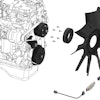
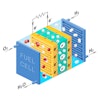
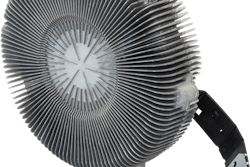
![Computational Fluid Dynamics analysis of a pouch-style battery with liquid cooling at two different power levels. [Source: Wu Z., Haugg A., Kemper H., Pischinger S. “Optimal Cooling Solution for High-Power Automotive Battery Module” EVS 31 & EVTeC 2018 Japan on October 2, 2018]](https://img.oemoffhighway.com/files/base/acbm/ooh/image/2018/11/AKG_Battery_Cooling_photo_3.5bdaf0cbcc7d0.png?auto=format%2Ccompress&fit=crop&h=167&q=70&w=250)
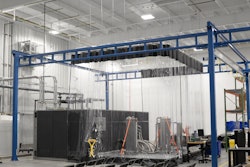


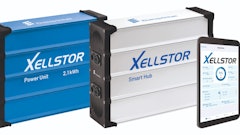
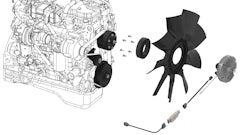

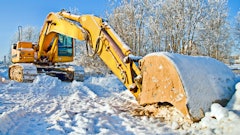
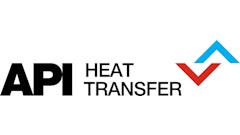
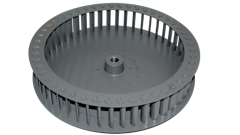


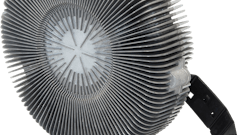
![Computational Fluid Dynamics analysis of a pouch-style battery with liquid cooling at two different power levels. [Source: Wu Z., Haugg A., Kemper H., Pischinger S. “Optimal Cooling Solution for High-Power Automotive Battery Module” EVS 31 & EVTeC 2018 Japan on October 2, 2018]](https://img.oemoffhighway.com/files/base/acbm/ooh/image/2018/11/AKG_Battery_Cooling_photo_3.5bdaf0cbcc7d0.png?ar=16%3A9&auto=format%2Ccompress&fit=crop&h=135&q=70&w=240)